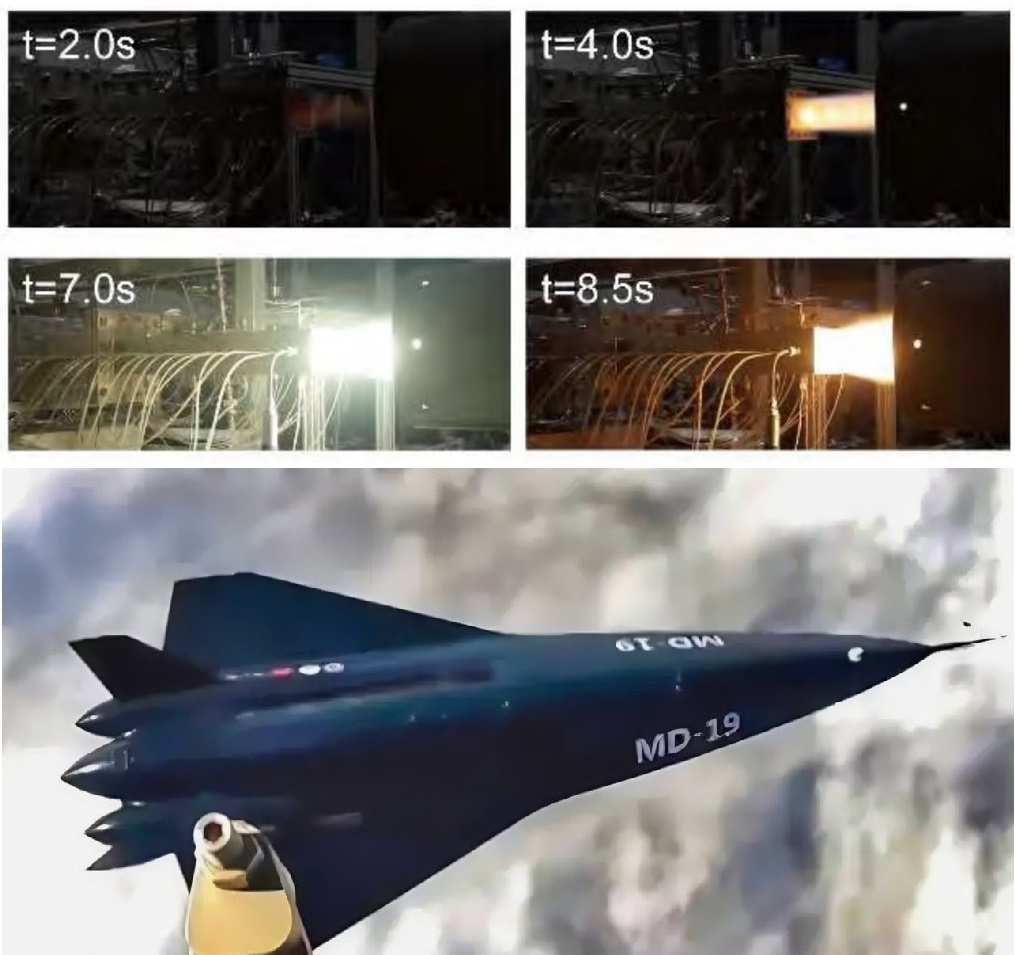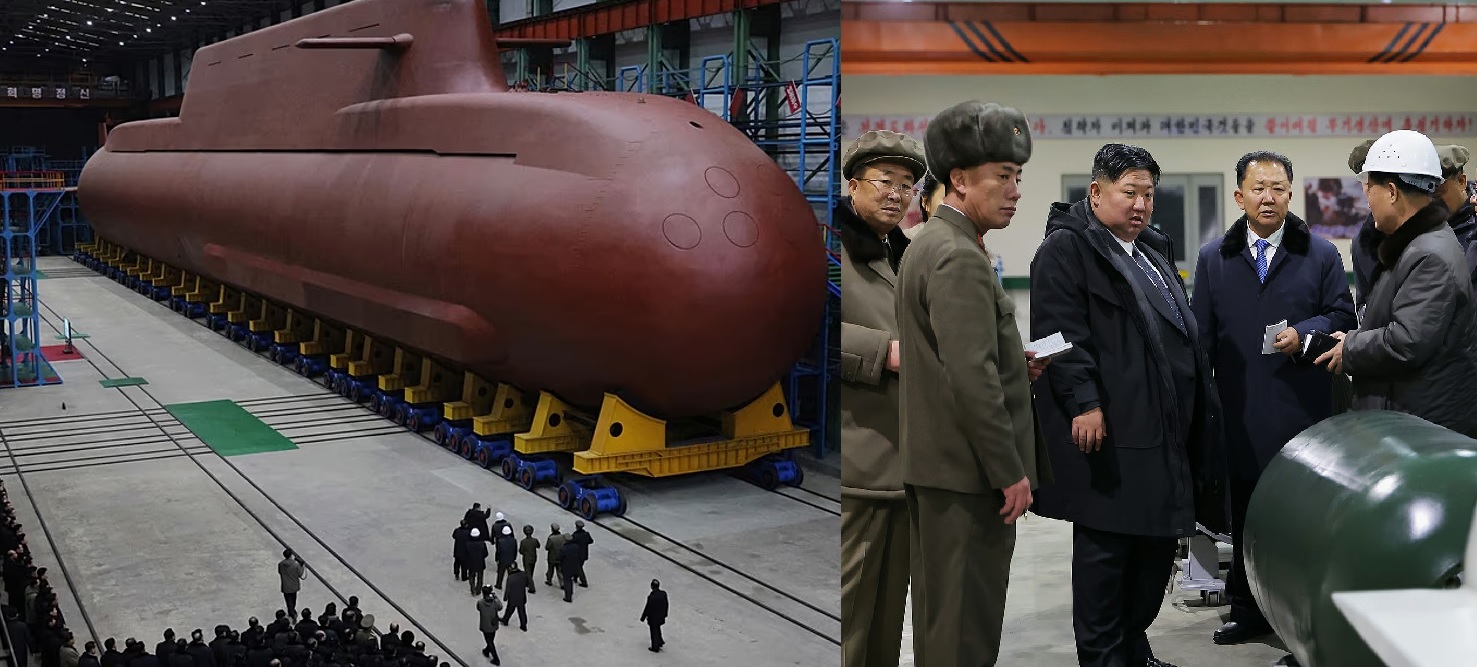China Unveils Magnesium-Powered Scramjet That Could Double Hypersonic Engine Thrust

In a development that could reshape the future of high-speed aviation and missile technology, Chinese researchers have achieved a major propulsion breakthrough — nearly doubling the thrust of a scramjet engine by injecting magnesium powder into its exhaust stream. The advance, led by Yang Qingchun, an associate professor at Beihang University in Beijing, marks one of the most innovative leaps in hypersonic propulsion in recent years and could accelerate China’s race toward Mach 10 flight.
Harnessing Fire Within Fire
At the heart of the experiment lies a deceptively simple idea: using metallic fuel to ignite “waste gases.” Traditional scramjet engines burn kerosene-based jet fuel (RP-3) at supersonic speeds, but at extreme velocities — beyond Mach 5 — the fuel’s energy yield begins to plateau. The unburned byproducts, mostly water vapour and carbon dioxide, are expelled as hot exhaust, unused.
Yang’s team realized that these exhaust gases could act as oxidisers if combined with a reactive metal such as magnesium, which burns explosively even without oxygen from the air. “Magnesium doesn’t need atmospheric oxygen,” the team wrote in their paper published last month in Acta Aeronautica et Astronautica Sinica. “It reacts violently with water vapour and carbon dioxide, releasing energy that was previously wasted.”
The result was a form of secondary combustion — an afterburner that operates not on fresh air but on the engine’s own exhaust. When magnesium powder was injected into the supersonic flow, it ignited instantly, producing a firestorm that released heat at a rate two to three times faster than kerosene alone.
Doubling the Thrust at Mach 6
Tests conducted at Beihang University simulated flight conditions at Mach 6 and 30 kilometres altitude, where air is thin and temperatures soar to 1,800 kelvin (1,527 °C). Under these conditions, injecting magnesium equal to just 13 percent of the exhaust mass led to an 86.6 percent increase in thrust, while overall combustion efficiency reached 65.1 percent.
The engine’s specific thrust — the amount of force generated per unit of airflow — jumped from 613 Newton-seconds per kilogram to 1,126 N·s/kg, a near-doubling in performance. Engineers attribute this to magnesium’s rapid exothermic reaction with water vapour, forming magnesium oxide and hydrogen gas that further boosts combustion energy.
Liquid kerosene, meanwhile, serves a dual purpose: it circulates through the engine first to cool the walls via regenerative cooling, preventing the structure from melting under hypersonic heat. Then, downstream, the magnesium ignites in a supersonic firestorm stabilized by twin cavities and optimized airflow paths — turning every drop of fuel and every molecule of exhaust into usable thrust.
Pushing the Boundaries of Hypersonic Propulsion
This approach challenges long-standing assumptions about scramjet limits. Traditional designs face two major hurdles: ignition instability at lower speeds and energy plateau at higher Mach numbers. By using magnesium to ignite residual gases, China’s researchers have effectively bypassed both, unlocking a new form of propulsion efficiency.
More importantly, the innovation could allow lighter launch weights, longer range, and higher top speeds for future hypersonic systems. If integrated successfully into a full vehicle, the design could reduce fuel consumption or extend operational range for hypersonic cruise missiles, glide vehicles, or even reusable spaceplanes.
In strategic terms, it could also tilt the balance in the global race for hypersonic dominance. The U.S. military, for example, has struggled with repeated testing delays and is only now moving toward fielding its first hypersonic weapon. China, by contrast, has already demonstrated air-breathing hypersonic engines reaching speeds beyond Mach 9, and Yang’s magnesium-fueled system may push that limit even further.
Challenges on the Path Ahead
Yet, even for China’s rapidly advancing aerospace sector, the road to operational deployment remains steep. Supersonic turbulence and shockwaves inside the combustor can cause uneven distribution of magnesium particles — limiting thrust gains if mixing isn’t perfect. In one experiment, reducing magnesium to 5 percent of exhaust mass dropped thrust gains from 86 percent to just 18.7 percent.
Then there’s the issue of erosion. When magnesium burns, it forms sharp magnesium oxide crystals — microscopic blades capable of scouring engine walls and nozzles. To withstand this, future engines will require new heat-resistant and erosion-resistant materials, likely ceramics or metal composites far beyond current jet alloys.
Scaling the system for real flight adds further complexity. Yang’s team achieved stable powder injection using nitrogen as a carrier gas, but maintaining that consistency across changing Mach numbers and altitudes will be akin to “threading a needle in a hurricane.” The researchers plan to refine fuel blending techniques and test nano-sized magnesium particles, which may combust more uniformly and efficiently.
Redefining Hypersonic Power
If perfected, magnesium afterburning could redefine what is possible in high-speed flight. By extracting new energy from exhaust gases rather than discarding them, China’s scramjet technology could deliver both higher performance and better fuel economy — critical for aircraft or missiles that must travel thousands of kilometres at Mach 6 or beyond.
In practical terms, it could mean longer-ranged hypersonic missiles, faster reconnaissance aircraft, and more efficient spaceplane boosters. For the People’s Liberation Army, it represents a strategic edge: the ability to field air-breathing vehicles that are lighter, faster, and harder to intercept than anything currently in Western arsenals.
As the United States, Russia, and China compete to dominate hypersonic propulsion, Beihang University’s magnesium scramjet breakthrough is more than just a laboratory success. It’s a signal that the physics of flight — long thought to be constrained by fuel chemistry and air resistance — may still have room to evolve.
For now, the magnesium engine remains a proof of concept. But if Yang Qingchun’s team can tame its volatility, the day may come when the blinding white flash of burning magnesium isn’t confined to laboratory test chambers — but propels the next generation of hypersonic aircraft through the edge of the stratosphere.
✍️ This article is written by the team of The Defense News.






